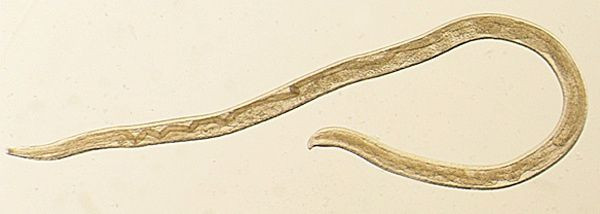What Is Thelazia Gulosa? Oregon Woman's Eye Had 14 Cattle Worms

An Oregon woman became the first human ever to be infected by a type of eye worm previously seen only in cattle after 14 "Thelazia gulosa" worms were removed from her eye, reports said Monday. The woman, Abby Beckley, was diagnosed in August 2016 with the genus of nematode worms, which is spread by a type of fly called "face flies," that feed on eyeball lubrication.
"A total of 14 worms were removed from her left eye over 20 days," Richard Bradbury, a Centers for Disease Control and Prevention (CDC) researcher and lead author of a case report on the event said. "They weren't able to remove them all at once. They had to remove them as they became present and visible."
Beckley suffered from severe eye irritation for a week, following which she pulled a worm from her eye. Initially she thought that the irritation was being caused by a hair or something else in her eye.
After finding one worm, the woman went to a local doctor, who pulled two more worms from her eye. The next day she showed an optometrist, who found another three worms. The worms were translucent and each less than half an inch long.
“Cases of eye worm parasitic infections are rare in the USA, and this case turned out to be a species of the Thelazia that had never been reported in humans,” Bradbury said, adding that previously it was thought there were only two different species of these eye worms that infected humans worldwide, and now Thelazia gulosa is the third.
"It's just really gross and very psychologically disturbing to see multiple small worms crawling across the surface of your eye," Bradbury said.
The research suspect the 26-year-old woman became infected with the eye worms while horseback riding in Gold Beach, Oregon, a cattle farming region.
"In general, flies are attracted to the moisture and salt in our tears," said Dr. Audrey Schuetz, an associate professor of pathology with the Mayo Clinic in Rochester, Minnesota, said. "The larvae are introduced into the fleshy part of our eyes when the fly is feeding on our tear film, the moist part around our eyes."
According to the researchers, if the worms are not removed from a person's eye after being there for a prolonged time, they can cause corneal scarring and even blindness.
The study was published Feb. 12 in the American Journal of Tropical Medicine.
© Copyright IBTimes 2024. All rights reserved.





















